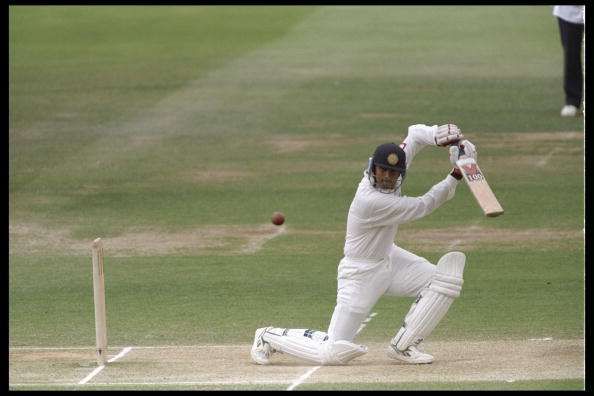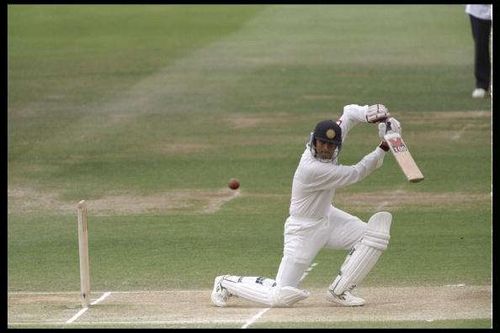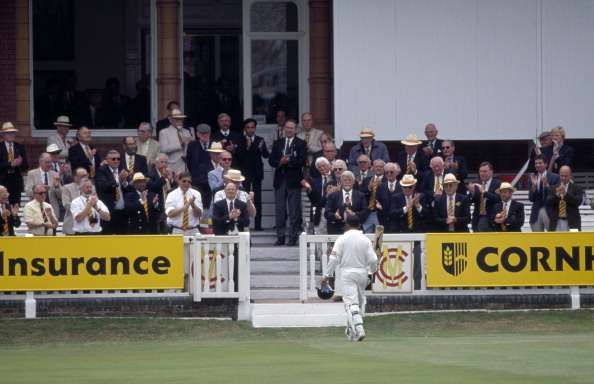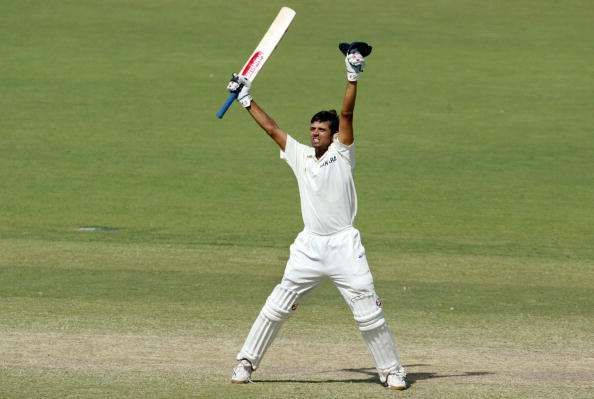
Rahul Dravid: A fan's tribute to the Great Wall of India

Classical technique, solid composure, textbook strokeplay – does that ring any bell? Wait let me give you a few more – indomitable grit, impregnable concentration, staunch perseverance. Now? Of course you’ve got the name. There are no prizes for realizing that. Rahul Dravid is the name and standing out like ‘The Wall’ was his game.
For nearly two decades, the highest run scoring No.3 in test cricket frustrated bowlers, giving opposition captains endless brain-freezes and perhaps a few premature white hairs in their attempt to devise a way to thwart the talisman.
Also Read: 5 underrated ODI knocks of Rahul Dravid
It all extrapolates back into the summer of June 1996, in a warm and cozy morning of Day 3 of the 2nd Test against Michael Atherton’s England at Lords. India then led by the legendary Mohammad Azharuddin were riding low following a humiliating defeat at the hands of Derbyshire in a little over two days.
But they were able to place England under severe pressure in the closing stages after being put in a strong position by two debutants, introduced because of injuries at Edgbaston, the other being Sourav Ganguly.
The stage was set. In came the man, the rock of India – Rahul Dravid, batting at Number 7. Yes you’ve read it right! He did start off his test career as a No.7. With a technique as classical as can be hoped for, he came out with an unenviable task of getting India past England’s tally batting with the tail.
On the other hand, the Prince of Kolkata defied critics and rewarded the crowd with a cogent 131 but was dismissed by Allan Mullaly having to leave his team still short of 48 runs to level England. Ganguly’s was the sixth wicket to fall and the batsman we are talking about here, was already in and had already added 94 runs with the southpaw.
There were a few play and misses as Dravid kicked off proceedings particularly off the trio of Lewis, Cork and Mulally on a pitch that was there to be exploited by the seamers but soon he would find his balance. Brought up in Bangalore, a city better known for supplying India with bowlers rather than batsmen, Dravid showed the soundest of temperament and technique essential for Test success.
He stood strong on 56 not out as the umpires called stumps on Day 3.
The next morning ‘The Wall’ came out again on a clear morning and gleefully battled his way onto 95 before edging the ball to the keeper off the bowling of Lewis, falling agonizingly short of a debut ton by 5 runs. Before the umpire even had to give his consent, he walked off, clearly fuming at none but himself as he took the long walk towards the historic pavilion.

The knock wasn’t the most decorated of all but it had promise and sky reaching ambition was written all over it. It featured only 6 fours, signifying how tough it was to bat out there and a bore a certificate of the greatness that this unassuming, hard working cricketer would go on to achieve.
Dravid’s bat spoke the words of resilience ever since that innings and since then, it has remained a glowing homage of perseverance and grit for all youngsters to come. His technique much like how any textbook of Test batting would emphasize was built on the fundamental principle of keeping the best balls out.
Hardly would you see him going after peaches or trying to play cheeky shots to dazzle the bowler by scoring off his best balls. Mind you, that’s not as easy as it sounds. For that Dravid had to hone his batting skills day in and day out to develop a rock solid defense.
Also Read: Rahul Dravid reveals how he was named 'The Wall'
Don’t let Dravid’s adamantine defense trick you into thinking he didn’t have the fancy shots. Yes for a kid born in the 2000s, grown in the ‘pangs’ and ‘shackles’ of T20 cricket, the definition of ‘fancy’ might vary from the one used here to present Dravid’s strokes. But very few could play the square drives past point on one knee better than the great Indian.
The cut shots with wrists rolled to keep the ball down, which rocketed to the point boundary with elegance were orgasmic to cricket lovers. To add more to that were his caressed flick in front of square, perfectly dissecting the mid-on and mid-wicket fielder like a laser blade.
Following the dawn of the new millennium, Sourav Ganguly was credited with the feat of picking team India from the rubbles and shaping them for the glory. Indeed, Sourav did bring India back to the ‘elites’ group but no way in the world could he had done it without Dravid.
It was Dravid, more even than Tendulkar, who soon became a cog-wheel and an enforcer of India’s overseas wins which has always been a terrible black spot on the country’s test record given the fact how egregiously dominant they were at home.
Also Read: SK Flashback: When Rahul Dravid slayed the demons of batting away from home

In the Adelaide Test of 2003, Dravid stood as the backbone, batting a grand total of 14 hours to score 233 and 76 in the first and second innings respectively which propelled India to a test match win in Australia after nearly 20 years. A few months fast forward, in India’s first tour to Pakistan in fifteen years, it was Dravid’s 12 hours 270 in the final test in Rawalpindi that clinched the series 2-1 over their arch rivals.
Not to forget his 180 in the historic Kolkata test, which India would go on to win after being forced to follow an against a mighty Aussie team. His heroic 148 in Leeds which helped India dismantle England by an innings and 46 runs needs a mention too.
As a matter of fact, Dravid played way too many pivotal knocks, making it illogical not to put him in the same bracket as the Laras, Pontings and Tendulkars.
Rahul Sharad Dravid was cricket’s last classical artist. Not to say he didn’t have the talent, but it was his work ethic, monumental concentration and pure gentlemanliness that set him apart from the rest. Watching him bat imbibed spectators with a respect for the specialist skills required of a test match batsman, as different from the slap bang methods of the T20 aficionados.
Cricket will forever miss the great Indian prodigy. It is heartbreaking to accept the fact that he no longer will take guard with that familiar hint of politeness. No longer will he raise his bat to the crowd as if he is genuinely thanking them for their applause - the bat tilted outwards in acknowledgment of the supporters, not just waved frantically in an orgy of personal celebration.
No longer will he stand at first slip, concise and precise in his movements - a cricketer first, an athlete second. No longer will the high Dravid back-swing and meticulous footwork link this generation with the great technicians of the past.